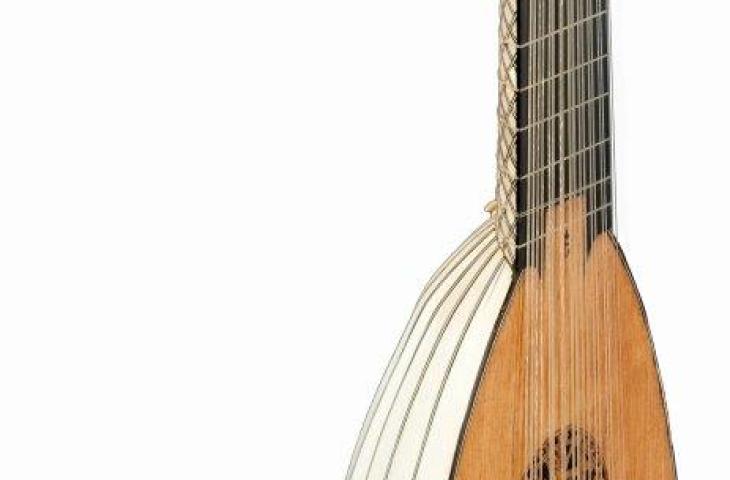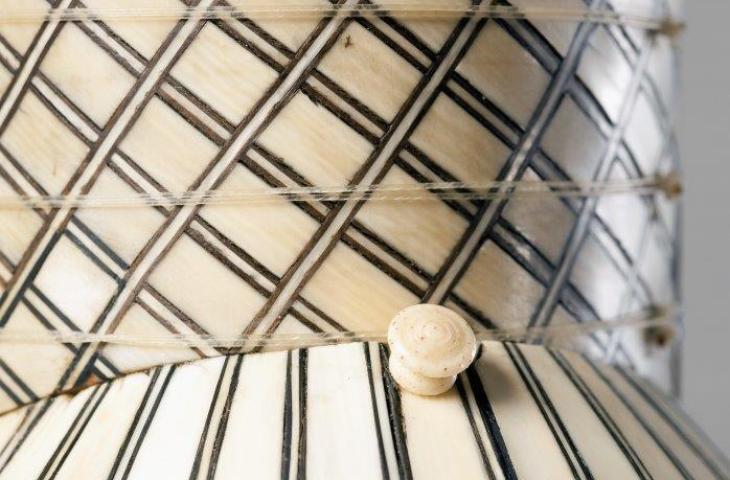Treble lute

Treble lute, Matthijs Hofmans, Antwerp, 1605, inv. 1556
Treble lute

Treble lute, Matthijs Hofmans, Antwerp, 1605, inv. 1556
It was through contacts with Arabic culture that, during the Middle Ages, the lute became known in Europe, where it remained in use until the end of the eighteenth century.
The instrument has a very recognizable silhouette. Its egg-shaped back is constructed of thin ribs, which serves to reduce the weight. The strings on the neck are grouped in pairs (courses) and are fastened to a peg-box set at a right-angle on the neck.
The lute was esteemed in Humanist circles during the Renaissance, and even became a symbol for Humanism. It reflected a certain life style, being played at Court and in the cultivated environment of the bourgeoisie.
It also played a substantial part in daily life in the commercial and cultural metropolis of Antwerp, where well-known luthiers built luxury instruments for amateur musicians from the prosperous and eager middle classes. One of those luthiers was Matthijs Hofmans, who made the small lute that is pictured here. The instrument dates from 1605 and its characteristic features include the sound-box with ivory ribs, the neck decorated with ivory and ebony, and the skillfully finished rose. This instrument is one of only three Antwerp lutes that have been preserved. Despite the renovations it has undergone, it remains an exceptional item.